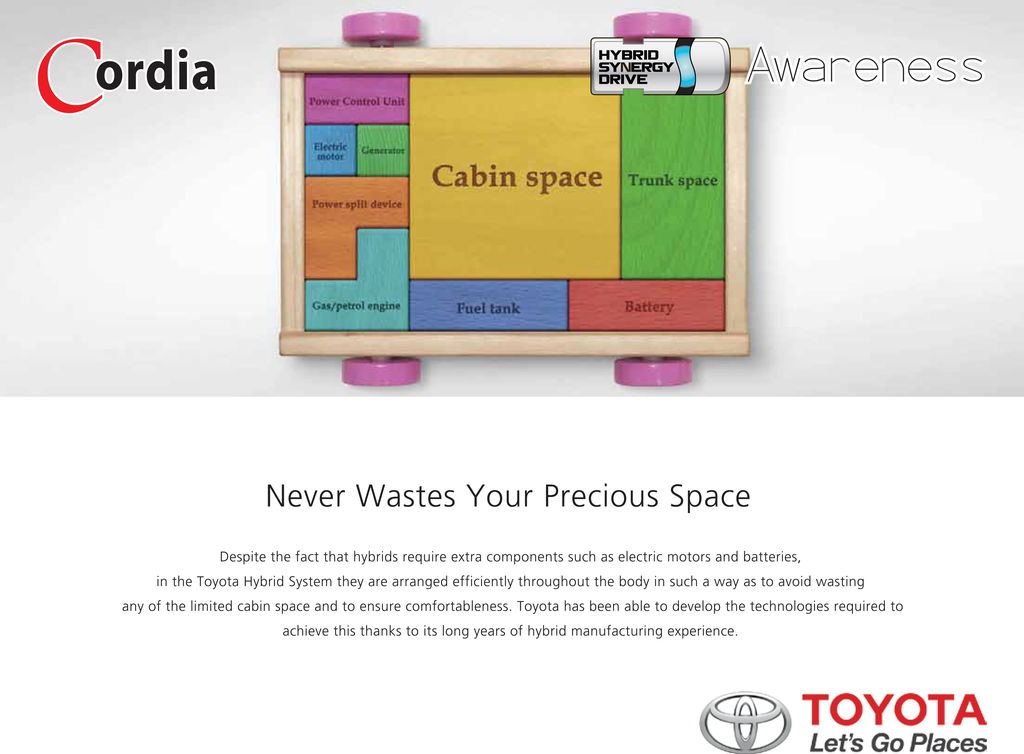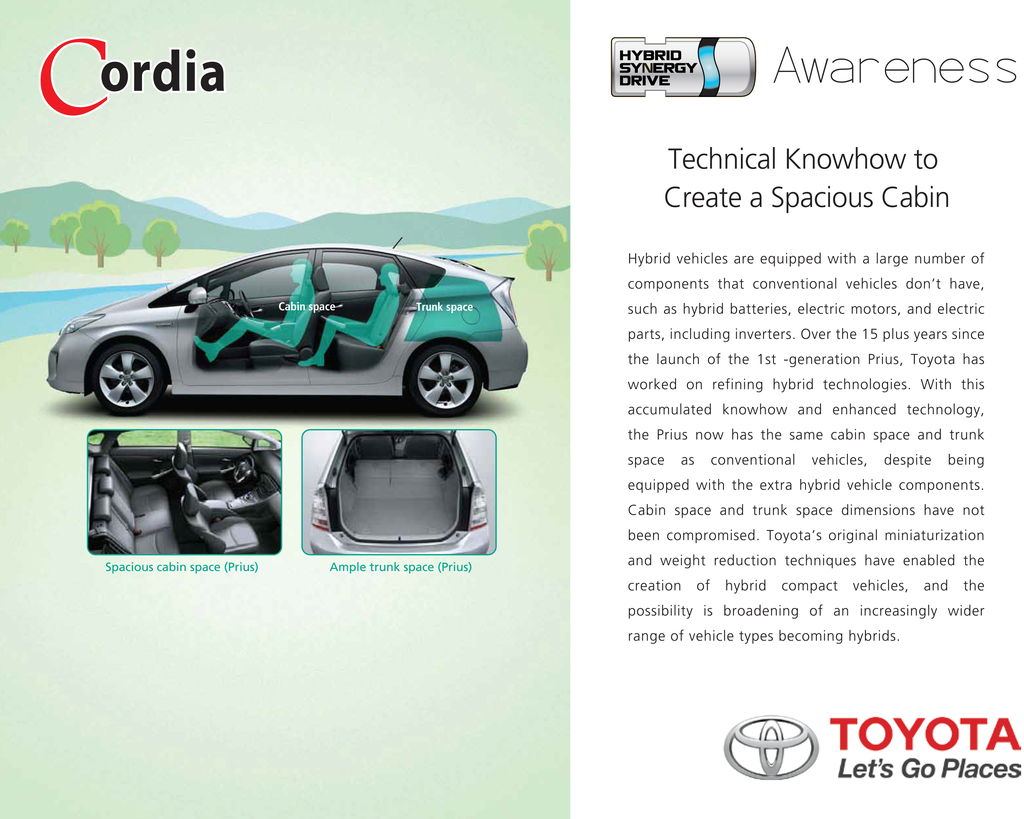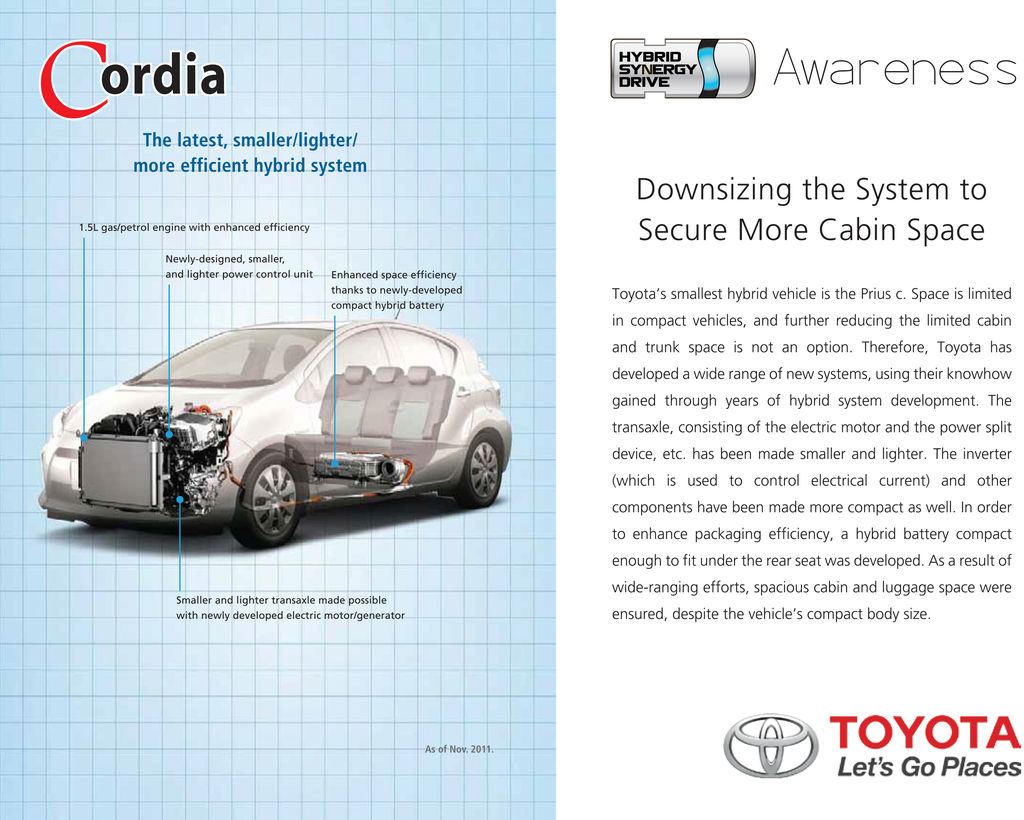
Never Waste Your Precious Space
Despite the fact that Hybrid require extra components such as electric motors and batteries, in the Toyota Hybrid System they are arranged efficiently throughout the body in such a way as to avoid wasting any of the limited cabin space and to ensure comfortableness. Toyota has been able to develop the technologies required to achieve this thanks to its long years of Hybrid manufacturing experience.

Technical Knowhow to Create a Spacious Cabin
Hybrid vehicle are equipped with a large number of components that conventional vehicles don't have, such as hybrid batteries, electric motors, and electric parts, including inverters. Over the 15 plus years since the launch of the 1st – generation Prius, Toyota has worked on refining hybrid technologies. With this accumulated knowhow and enhanced technology, the Prius now has the same cabin space and trunk space as conventional vehicle, despite begin equipped with the extra hybrid vehicle components. Cabin space and trunk space dimensions have not been compromised. Toyota's original miniaturization and weight reduction techniques have enabled the creation of hybrid compact vehicles, and the possibility is broadening of an increasingly wider range of vehicle types becoming hybrids.

Downsizing the System to Secure More Cabin Space
Toyota's smallest hybrid vehicle is the Prius C. Space is limited in compact vehicles, and further reducing the limited cabin and trunk space in not as opinion. Therefore, Toyota has developed a wide range of new systems, using their knowhow gained through years of hybrid system development. The transaxle, consisting of the electric motor and the power split device, etc. has been made smaller and lighter. The inverter (which is used to control electrical current) and other components have been made more compact as well. In order to enhance packaging efficiency, a hybrid battery compact enough to fit under the rear seat was developed. As a result of wide-ranging efforts, spacious cabin and luggage space were ensured, despite the vehicle's compact body size.